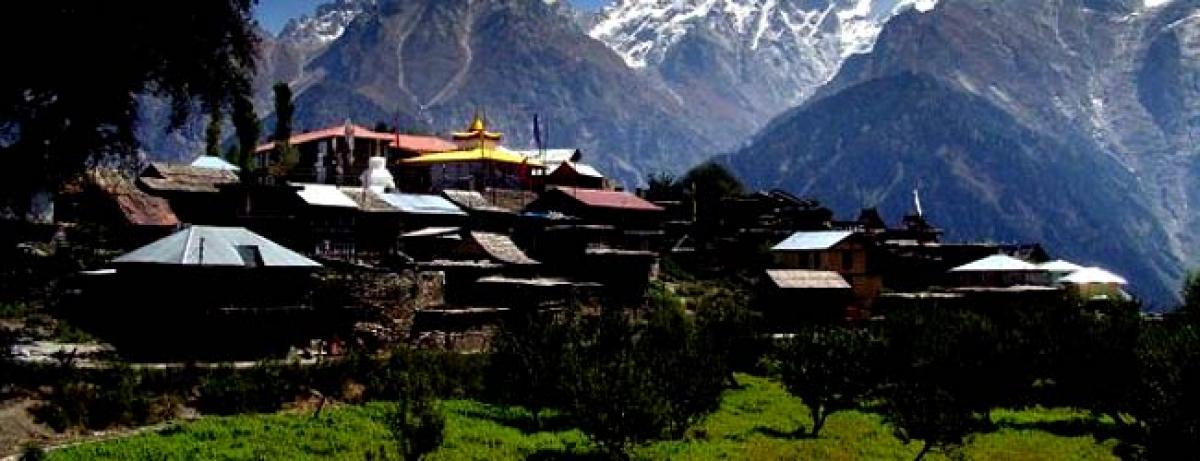Kinnaur distric in Himachal for breathing clean air

If you want to breathe clean air, travel to Himachal Pradesh\'s remote Kinnaur district that is endowed with the mighty Himalayas, gurgling rivers, virgin nature and a rich cultural heritage.
Shimla: If you want to breathe clean air, travel to Himachal Pradesh's remote Kinnaur district that is endowed with the mighty Himalayas, gurgling rivers, virgin nature and a rich cultural heritage.
A recent study by the Indian Institute of Technology-Delhi (IIT-D) says Kinnaur district has the cleanest air in the country, whereas the national capital is the most polluted.
According to the the IIT-D Centre for Atmospheric Sciences, PM 2.5 (particulate matter) in Kinnaur was found to be 3.7+-1 microgram per cubic metre (g/m) annually, which is less than 10 percent of the national air quality target of 40g/m.
Unlike Kinnaur, air particulate matter level of Delhi stood at 148+-51g/m annually, which is several times higher than the safe limit.
PM 2.5 is harmful microscopic particles that can penetrate deep into the lungs.
Kinnaur Deputy Commissioner Naresh Kumar Lath said the environment protection initiatives taken by the administration helped checking air and water pollution levels.
+ACI-A solid waste management project with an outlay of Rs.1 crore (+ACQ-150,000) is ongoing in the district. Likewise, building toilets under the Swatch Bharat Mission-Gramin is also under way,+ACI- a beaming Lath told IANS.
He said several toilets have been built and the villagers have been sensitized against going into the fields to attend to nature's call.
The construction of toilets is a major focus area and 30 percent of the remaining panchayats would soon be made +ACI-open defecation-free+ACI-, he added.
Most of the villages of Kinnaur, which remain cut off from the rest of the country for more than six months a year owing to heavy snowfall, are known for their rich tribal culture and traditions.
The district is home to a population of 31,528 as per the 2011 census.
There is a tradition in this tribal-dominated district to welcome guests with a garland of dry fruits and a round Kinnauri cap with a green flap.
The district administration, based in Rekong Peo, some 250 km from the state capital Shimla and known for growing delicious apples, a few years ago banned the use of plastic mineral water bottles in all official meetings and functions. The water is served in +ACI-kulhars+ACI- or clay mugs.
The district, despite facing environment degradation owing to three large hydro-electric projects that are operational in the Satluj valley and many others coming up, has more than 60 registered home-stay units, besides numerous hotels and guest houses.
Kinnaur is known for legally brewing 'angoori' and 'ghanti' home-made liquor.
While the former is made from distinctively flavoured black grapes grown in high altitudes, the latter is made from locally grown apples and apricots.
Chitkul, a village close to the China border with a backdrop of the majestic snow-clad Kinner Kailash peaks, is a must place to visit in the district.
It nestles amid virgin nature, with abundant wildlife and exquisite flora and fauna. It is also the last point in India one can travel to without a permit.
This picturesque village of Kalpa, located at 9,711 feet above sea level, is known for its apple orchards and natural untouched beauty.
The idyllic, pastoral settings in Kinnaur have been attracting a large number of backpackers, mainly foreigners, for mountaineering expeditions, high-altitude treks and white-water rafting.
Getting to Kinnaur
How to travel: By public or private transport. Cabs normally charge around Rs.5,000 from Shimla (one-way) to Rekong Peo and it takes at least 12 hours.
Distance: 250 km from state capital Shimla to Rekong Peo.
Where to stay: Small hotels, guest houses, and even home stays with local people.








